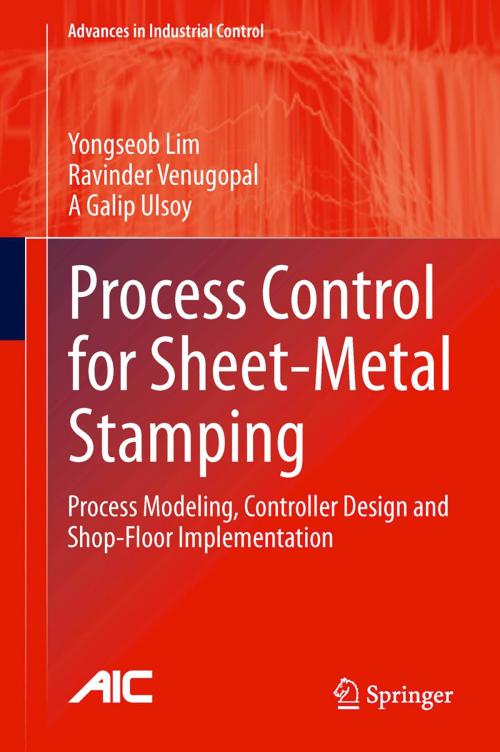Process Control for Sheet-Metal Stamping
Process Modeling, Controller Design and Shop-Floor Implementation
Nonfiction, Science & Nature, Technology, Automation, Manufacturing| Author: | A Galip Ulsoy, Ravinder Venugopal, Yongseob Lim | ISBN: | 9781447162841 |
| Publisher: | Springer London | Publication: | December 12, 2013 |
| Imprint: | Springer | Language: | English |
| Author: | A Galip Ulsoy, Ravinder Venugopal, Yongseob Lim |
| ISBN: | 9781447162841 |
| Publisher: | Springer London |
| Publication: | December 12, 2013 |
| Imprint: | Springer |
| Language: | English |
Process Control for Sheet-Metal Stamping presents a comprehensive and structured approach to the design and implementation of controllers for the sheet metal stamping process. The use of process control for sheet-metal stamping greatly reduces defects in deep-drawn parts and can also yield large material savings from reduced scrap. Sheet-metal forming is a complex process and most often characterized by partial differential equations that are numerically solved using finite-element techniques. In this book, twenty years of academic research are reviewed and the resulting technology transitioned to the industrial environment. The sheet-metal stamping process is modeled in a manner suitable for multiple-input multiple-output control system design, with commercially available sensors and actuators. These models are then used to design adaptive controllers and real-time controller implementation is discussed. Finally, experimental results from actual shop floor deployment are presented along with ideas for further improvement of the technology. Process Control for Sheet-Metal Stamping allows the reader to design and implement process controllers in a typical manufacturing environment by retrofitting standard hydraulic or mechanical stamping presses and as such will be of interest to practising engineers working in metal-working, automotive and aeronautical industries. Academic researchers studying improvements in process control and how these affect the industries in which they are applied will also find the text of value.
Process Control for Sheet-Metal Stamping presents a comprehensive and structured approach to the design and implementation of controllers for the sheet metal stamping process. The use of process control for sheet-metal stamping greatly reduces defects in deep-drawn parts and can also yield large material savings from reduced scrap. Sheet-metal forming is a complex process and most often characterized by partial differential equations that are numerically solved using finite-element techniques. In this book, twenty years of academic research are reviewed and the resulting technology transitioned to the industrial environment. The sheet-metal stamping process is modeled in a manner suitable for multiple-input multiple-output control system design, with commercially available sensors and actuators. These models are then used to design adaptive controllers and real-time controller implementation is discussed. Finally, experimental results from actual shop floor deployment are presented along with ideas for further improvement of the technology. Process Control for Sheet-Metal Stamping allows the reader to design and implement process controllers in a typical manufacturing environment by retrofitting standard hydraulic or mechanical stamping presses and as such will be of interest to practising engineers working in metal-working, automotive and aeronautical industries. Academic researchers studying improvements in process control and how these affect the industries in which they are applied will also find the text of value.















